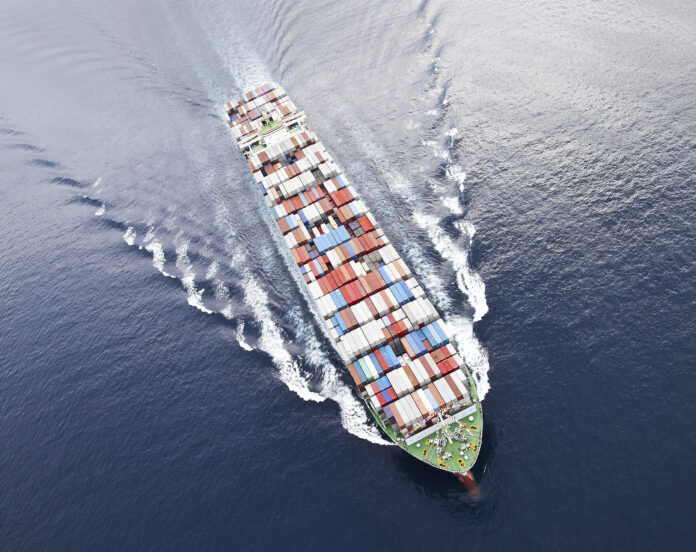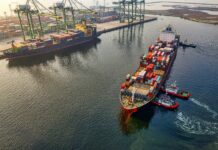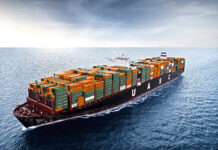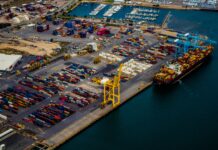
In its recent quarterly analysis, titled Decoding Maritime Emissions: Assessing GHG Hotspots, Trade Lanes, and Industry Shifts for Q1, 2025, VesselBot examines how the maritime industry is navigating an evolving landscape shaped by geopolitical tensions, environmental pressures, and market volatility.
Using data collected directly from vessel operations, the technology company provides insights into global maritime emissions patterns and the shipping industry’s response to external disruptions, such as the Red Sea crisis and global warming, among others.
VesselBot’s analysis revealed a 19.38% increase in total GHG emissions compared to Q1 2024, with emissions in Q1 2025 just below 60 million tons, while average emissions intensity improved to 206.93 g CO₂e/TEU km from 231.55 in Q1 2024.
At the same time, total container volumes increased from 162.53 million TEUs in Q1 2024 to 188.8 million TEUs in Q1 2025, accompanied by improved vessel utilization (load factor), which rose from 62% to 68%.
Furthermore, VesselBot’s report said that vessels rerouting around Africa due to the Red Sea disruptions show the highest GHG emissions while also achieving the highest vessel utilization rates (>80%).
The analysis of 130 vessels passing through the Suez Canal during the first three months of 2025 showed that carriers are making a phased return to the Red Sea, with an average vessel capacity of over 4,100 TEUs.
Another key finding from the analysis highlights the continued dominance of Asian ports in global shipping, with Singapore alone recording over 2,000 port calls. Notably, no U.S. ports ranked among the global leaders.
Constantine Komodromos, CEO and Founder of VesselBot, commented: “Rather than relying on secondary sources or industry estimates, we continuously gather and analyze real-time operational data from container vessels worldwide, enabling unparalleled accuracy in tracking emissions, vessel utilization, and operational efficiency.”
He went on to explain: “While the maritime industry in 2025 faces unprecedented challenges from environmental pressures, geopolitical conflicts, and market volatility, these very disruptions highlight why accurate emissions data is now mission-critical. Decision-makers require granular insights not just to navigate today’s complexities, but to drive the operational efficiencies and sustainable innovations that will transform maritime shipping into the resilient, low-carbon industry our global future demands.”





